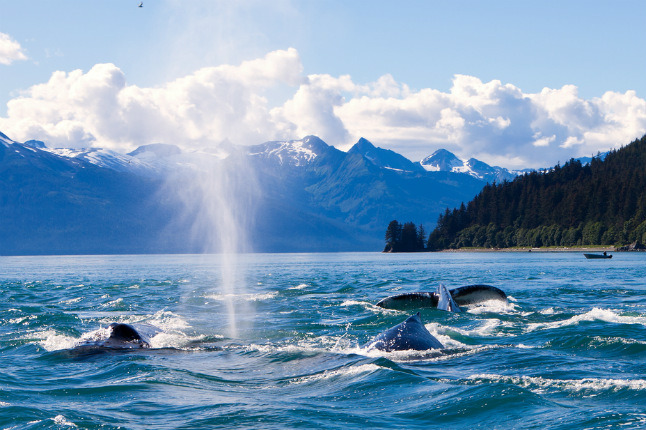A 900-Mile Solo Paddle: Learning To Navigate
Editor's Note: This is Part 2 of a three-part series about paddling the Inside Passage, a 1,200-mile waterway that stretches from Washington's Puget Sound to Glacier Bay, Alaska. This is a months-long bucket list journey through one of North America's most pristine stretches of coastline, where paddlers encounter whales, icebergs, grizzlies, wolves and more than their fair share of tricky sea conditions. Click here for Part 1, and here for Part 3.
All this sea stuff was new to me. I've spent most of my adult life in Colorado, Wyoming and Montana. Most people who plan to paddle the Inside Passage prepare for months by getting physically fit, doing sit-ups with a twist, but instead I raced to submit final grades. I spent late nights plotting my route with a stack of maps on the dining-room table. I read books about navigation while I walked my old dog, and I begged friends of friends on the coast to teach me anything they knew that might help me survive.
Once I began paddling, a constant diet of problem solving kept me moving through a summer of steady rain and cool temperatures. My hands blistered horribly, my pruney toes split, but I grew stronger. I lost a tremendous amount of weight, then regained it as muscle.
I kept a blog, travelswithjosie.com, and focused on the lessons I learned and the characters I met along the way—human, animal and sometimes inanimate. I called home whenever I had a signal, which was more often than you might think, although less frequently than my people would have liked. I checked in with my satellite locator every night, providing a dot on the map that my father visited via Google Earth every day.
At the end of my first day, for instance, I camped on a grassy knob, only to awake the next morning to my first lesson in tides and the ways they change the landscape: The low tide exposed a long mudflat I had to cross to launch my boat. I built the first of the trip's many wet log roads and slid the kayak toward the water. It was windy and raining, and gumbo mud sucked at my neoprene boots. The water retreated as the tide went out, and I raced between my far-off gear pile and the increasingly heavy boat, skootching the kayak forward until it floated.
Later on Day 2, as I paddled toward a cliff-lined point, the sea ahead suddenly reared up, sharp and jagged. I backed into an eddy, astonished. The specter was rising and falling, surging, splashing, but not, as I first thought, moving toward me. It was my first encounter with a tidal race, a condition that arises where strong currents collide to form abrupt standing waves. I learned to skirt many of these bursts of turbulence by hugging the rocky shoreline.
Paddling class was always in session, and unannounced quizzes were frequent. Lessons often hit with a jolt of anxiety, then resolved to my joy and relief, as I gained a better understanding of the world I was moving through.
I learned that navigation is less about getting from one point to the next than it is about understanding what the sea will allow—or require.
Soon, I found myself paddling two miles east, up Rosario Strait, a busy commercial shipping lane, then across the strait in the wake of a huge icebreaker, and doubling back west the same two miles, on the other side, then north a mile. I crossed an inlet that was flooding into Rosario, struggling to keep from washing out to sea on the tide. After six hard miles, I reached my goal—an island less than two miles across from where I had started. Wind and current had made it too rough to dash straight across.
Patience is a lesson the sea teaches over and over again. When conditions are bad, just wait for them to change. Wait for the wind to die, for the tide to turn, for the sea to be ready. You may have to wait until tomorrow, or the next day. Then, all at once, you make your move. Exposed reaches lifted by ocean swells and prone to sudden storms become serene rainbow-draped mirrors for the patient paddler.
–
